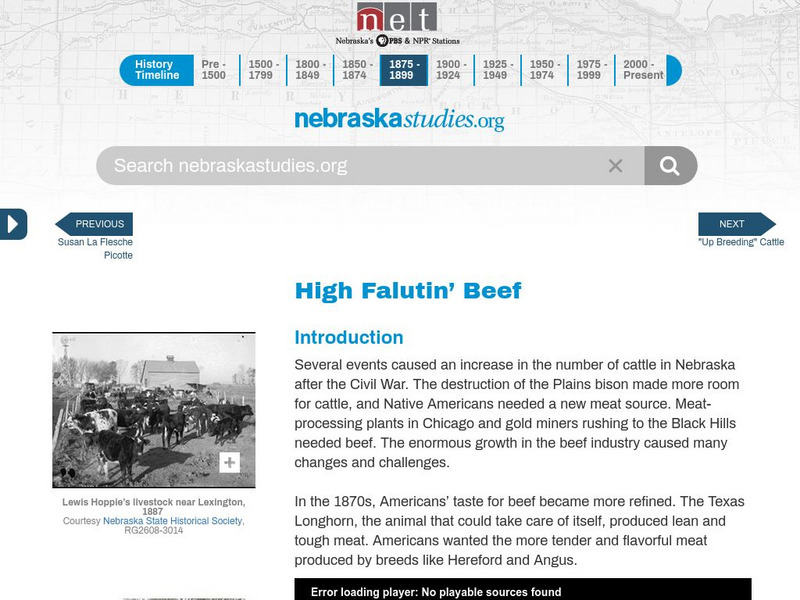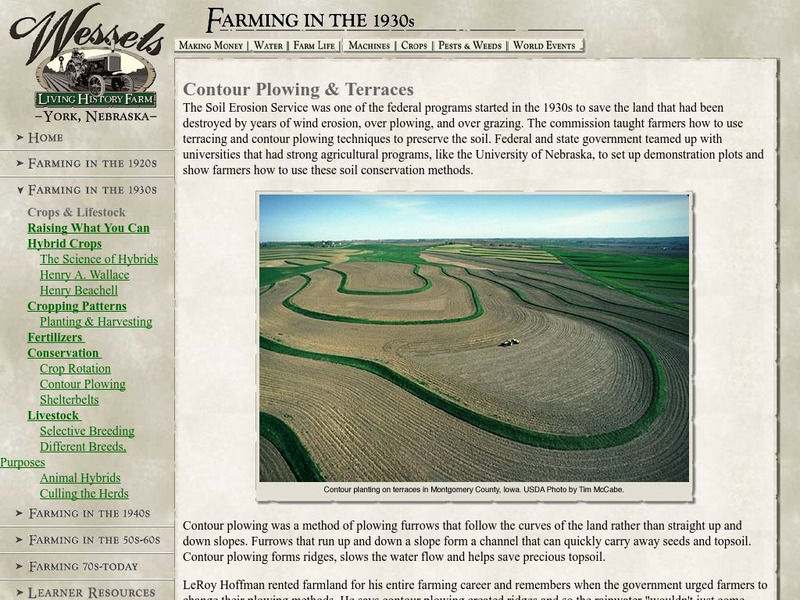Hi, what do you want to do?
Khan Academy
Khan Academy: Us History: 1865 1898: America Moves to the City
The industrial boom of the late nineteenth century led Americans and immigrants from the world over to leave farming life and head to the city.
Khan Academy
Khan Academy: Us History: 1865 1898: Westward Expansion: Economic Development
In the late nineteenth century, the West developed into a modern agricultural machine- at the expense of farmers.
Khan Academy
Khan Academy: Native American Culture of the Northeast
Hopewellian culture dominated the Northeast region from 200 BCE to 500 CE, where Native American groups began large-scale three-sister farming. Read more about these tribes and find out why many historians argue that the Iroquois League...
University of Groningen
American History: Outlines: Nullification Crisis
Toward the end of his first term in office, Jackson was forced to confront the state of South Carolina, the most important of the emerging Deep South cotton states, on the issue of the protective tariff. Business and farming interests in...
University of Groningen
American History: Outlines: Agriculture Rules the South
The essay describes the devlopment of the Southern colonies as agricultural centers and the cultural aspects associated with rural, agricultural life.
Texas State Historical Association
Texas State Historical Association: Agriculture
Read about the history of the agricultural industry and how it shaped the great state of Texas throughout the nineteenth and twentieth centuries.
Khan Academy
Khan Academy: Native American Culture of the Southwest
This article discusses the Ancestral Pueblo people who lived in the southwestern region of the modern United States; they constructed elaborate buildings and began the American farming tradition.
Khan Academy
Khan Academy: Threshold Card: Threshold 7: Rise of Agriculture
An infographic about how human civilization changed as they moved away from forging for food to farming.
University of Groningen
American History: Outlines: Machines Help Farmers
Read about the advances made in agriculture during the last part of the 19th century which allowed for the increase in production of farm products.
Other
Texas Council on Economic Education:texas Economics Eras & Individuals [Pdf]
A 10-lesson, 83-page unit targeting Grades 4 and 7. Lessons cover various eras in the history of Texas, including boom and bust towns; the eras dominated by cattle, fences along the frontier, cotton, and oil; the Dust Bowl and the Great...
Nebraska Studies
Nebraska Studies: High Falutin' Beef
This is an impressive history of the introduction of beef to the Great Plains region complete with videos, photos, and lesson plans.
Wikimedia
Wikipedia: Crop Rotation
Wikipedia provides a definition of crop rotation, including a brief history and examples.
Other
Fantasy Farms: About Alpacas
From the website of an alpaca farm, the page offers information about the history of alpacas and their recent import into the United States. You will also learn about the alpaca's physical characteristics, behavior, and commercial uses.
National Academy of Engineering
Greatest Achievements: Agricultural Mechanization
This page details the mechanization of agriculture from the late 1800's to the late 1900's.
Digital History
Digital History: Early Industrialization
Advances in technology affected manufacturing in the North and farming in the South. Read about how America turned from a country where most products were made in the home to an economic power that used factory production.
University of Groningen
American History: Biographies: Jacob Broom 1752 1810
Broom was born in 1752 at Wilmington, DE., the eldest son of a blacksmith who prospered in farming. The youth was educated at home and probably at the local Old Academy. Although he followed his father into farming and also studied...
Digital History
Digital History: The Growth of the American Economy
A brief look at why the American economy boomed across the country after the War of 1812. Read about the industrialization, expansion of transportation, and improved farming techniques.
Wessels Living History Farm
Living History Farm: Contour Plowing
Wessels Living History Farm explains some of the history behind contour plowing in the United States. Great photo illustrating contour planting on terraces in Iowa included.
University of Groningen
American History: Outlines: Colonial Economy
Whatever early colonial prosperity there was resulted from trapping and trading in furs. In addition, the fishing industry was a primary source of wealth in Massachusetts. But throughout the colonies, people relied primarily on small...
The History Cat
The History Cat: The Constitutional Convention: Creating the Constitution
Explains why the Articles of Confederation were not strong enough to hold the country together. One result was a farmers' rebellion in Massachusetts led by Daniel Shays, which was precipitated by a debt crisis that caused many farmers to...
Digital History
Digital History: The African American as Sharecropper [Pdf]
After reading about the system of sharecropping or tenant farming for the African American in the South, look at poverty statistics for African Americans vs. whites between 1960 and 1990. Is there a corelation between the sharecropping...
University of Groningen
American History: Biographies: Roger Sherman (1721 1793)
In 1723, when Sherman was 2 years of age, his family relocated from his Newton, MA, birthplace to Dorchester (present Stoughton). As a boy, he was spurred by a desire to learn and read widely in his spare time to supplement his minimal...
Independence Hall Association
U.s. History: Life on the Farm
With the passage of the Homestead Act, settlers could own 160 acres for free. Read about the problems that faced the new farmers both economically and from Mother Nature.
The History Cat
The History Cat: Age of Exploration: The Columbian Exchange
A fascinating look at the exchanges that took place around the world after the Americas were discovered. This covered the gamut from diseases which wiped out 90% of the native peoples in North and South America, to farm animals, tools,...









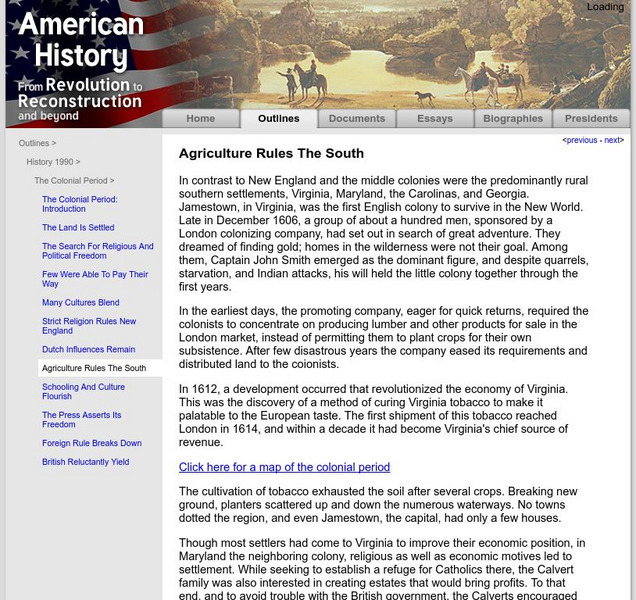
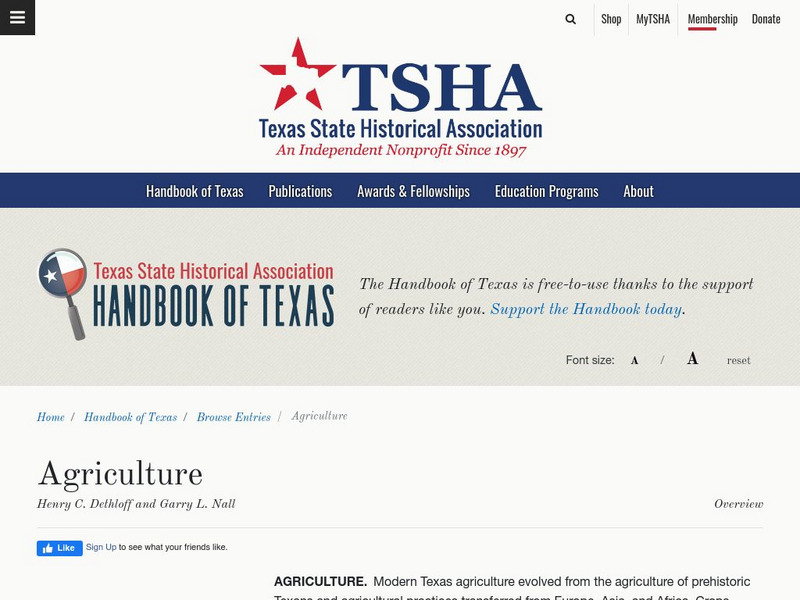


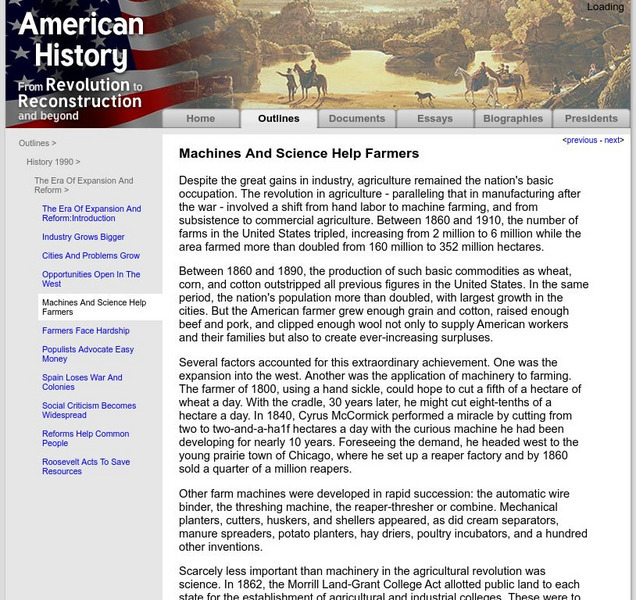
![Texas Council on Economic Education:texas Economics Eras & Individuals [Pdf] Lesson Plan Texas Council on Economic Education:texas Economics Eras & Individuals [Pdf] Lesson Plan](https://static.lp.lexp.cloud/images/attachment_defaults/resource/large/FPO-knovation.png)
